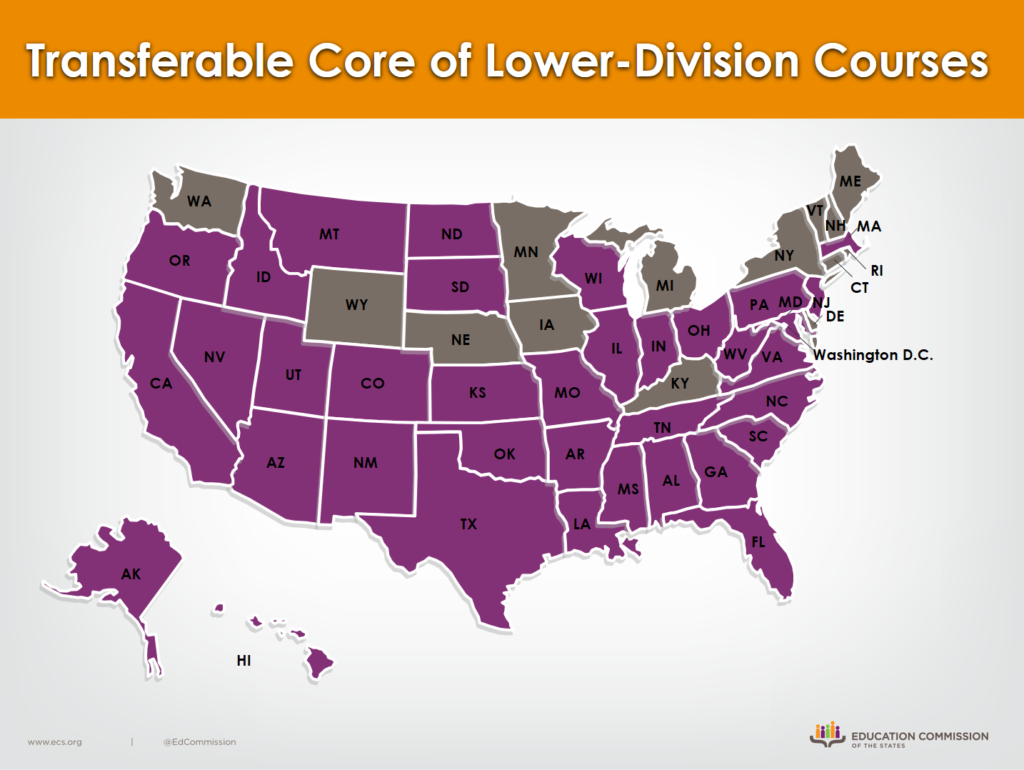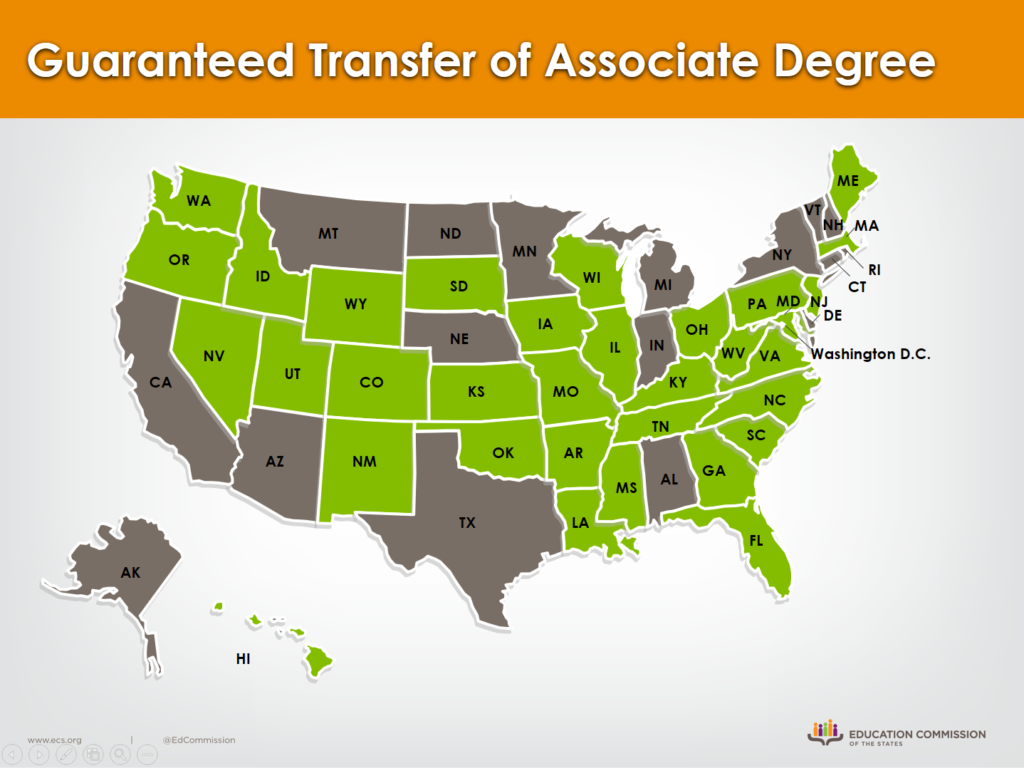Last month, we updated the 50-State Comparison on college transfer and articulation and saw a refinement of multiple statewide transfer policies — pointing to a commitment to increase student completion rates. However, recent studies lament the continual loss of credit in the transfer process, especially those from two- to four-year institutions. So how can states improve these policies to provide support for transfer students?
Over 30 states have policies requiring a transferable core of lower-division courses and statewide guaranteed transfer of an associate degree.

 This takeaway seems promising for continued credit transfer progress, given that the average transfer-out rate is around 33 percent. Yet the prevalence of credit loss is still high among transfer students: As many as 50 percent of students transferring from two- to four-year institutions lose some amount of credit in the process. This can be particularly problematic if that lost credit includes general education or major courses, as these are building blocks toward credential completion.
This takeaway seems promising for continued credit transfer progress, given that the average transfer-out rate is around 33 percent. Yet the prevalence of credit loss is still high among transfer students: As many as 50 percent of students transferring from two- to four-year institutions lose some amount of credit in the process. This can be particularly problematic if that lost credit includes general education or major courses, as these are building blocks toward credential completion.
There are other ways states can foster a more efficient and seamless process for transfer students. Education Northwest’s 10-state study includes recommendations to increase the effectiveness of credit transfer, including updating policies to meet the needs of undecided transfer students and improving communication plans. To those, we add additional considerations for states, including:
- Intensive data collection and policy evaluation. States can align data systems, creating P-20 state longitudinal data systems. Based in part on that data, they can evaluate transfer policies annually to assess effectiveness.
- Incorporate technology for transcript alignment. States can encourage public institutions to share technology, creating electronic transcripts that note lower-division courses or associate degree completion.
- Extend reverse transfer opportunities to near-completers. States can update policies to allow non-enrolled students to participate, and they can align resources — including emergency aid, financial advising and re-entry institution choice when re-entering — with policy.
As we continue to see an increase in and changes to transfer policies, it is important to examine them in the larger context of completion, attainment and affordability. Affordability continues to be an issue in higher education, especially when discussing effectiveness of credit transfer policies. Currently the outstanding federal student loan debt is $1.4 trillion. The population of students who have some college experience, but no credential may have accrued debt without a degree or certification to show for it — increasing the need for strong, effective transfer policies. Strong transfer policies create seamless pathways between community colleges, four-year institutions and into the workforce. Closing the credit loss gaps takes clear course alignment, strong statewide policies/initiatives and close collaboration between key stakeholders. The recommendations highlighted above can help policymakers and higher education leaders create and improve transfer policies for successful credit mobility.










